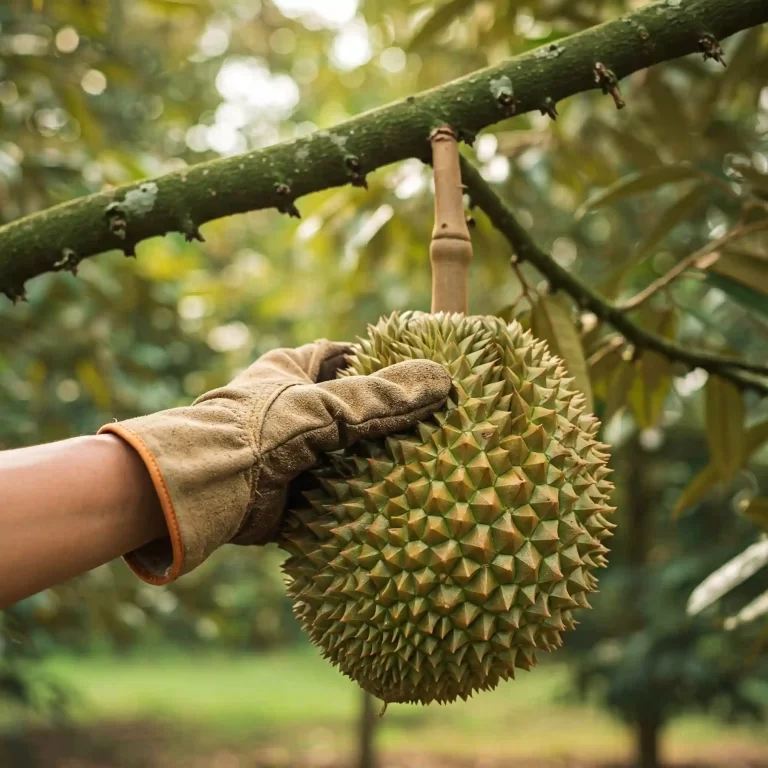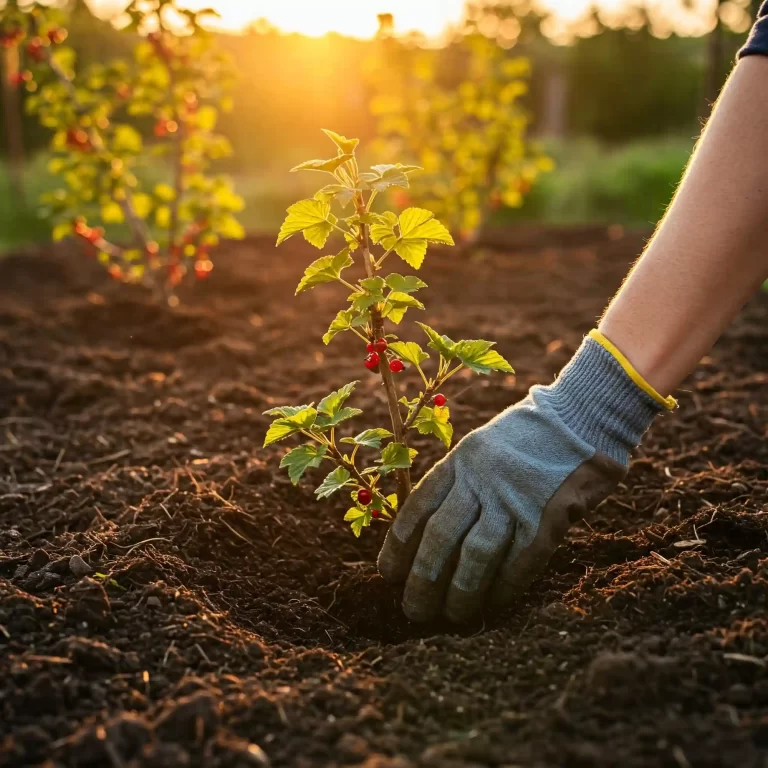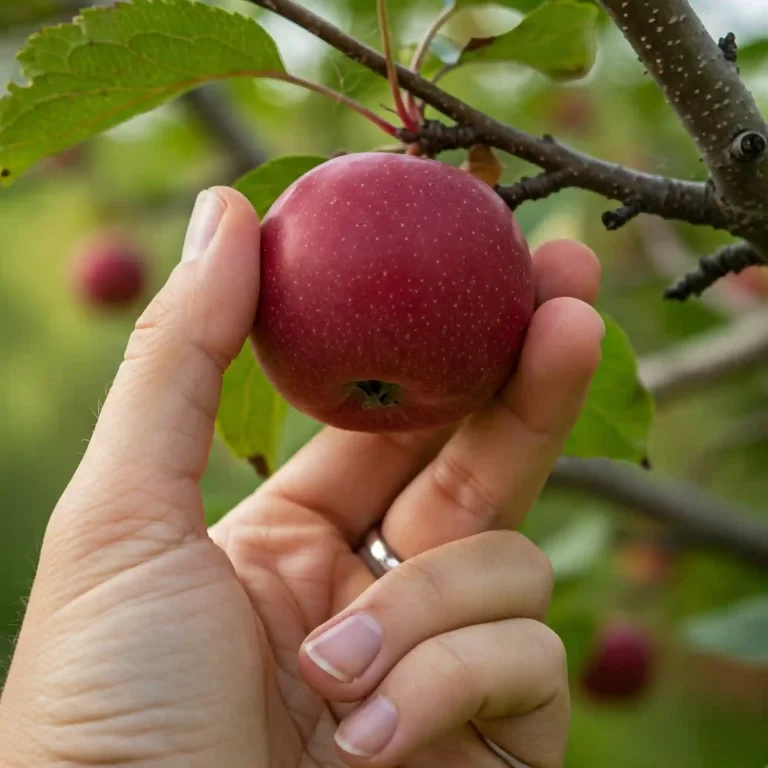Have you ever noticed the decline in bees, butterflies, and other pollinators in your garden? It’s a worrying trend that affects not just our gardens but the entire ecosystem. Without these crucial pollinators, many plants, including those that produce our food, would struggle to reproduce.
This decline isn’t just a minor inconvenience; it’s a significant environmental issue. The absence of pollinators can lead to reduced crop yields, less biodiversity, and a less vibrant garden. It’s disheartening to see fewer butterflies fluttering around or to hear less buzzing from bees. This decline can make our gardens feel lifeless and less enjoyable.
But there’s a way to turn this around. By creating a pollinator garden, you can attract and support these essential creatures, bringing life and vibrancy back to your garden. Not only will you be helping the environment, but you’ll also enjoy a more beautiful and productive garden space.
1. What is a Pollinator Garden?
A pollinator garden is a specially designed garden that provides a habitat for pollinators such as bees, butterflies, hummingbirds, and other beneficial insects. These gardens are planted with a variety of flowers, shrubs, and trees that offer nectar and pollen, essential food sources for pollinators.
Pollinator gardens are not just about planting flowers; they are about creating a balanced ecosystem that supports the life cycles of these important creatures. This involves considering the types of plants, their blooming periods, and the overall garden layout to ensure that pollinators have access to food and shelter throughout the year.
Key Characteristics of a Pollinator Garden
- Diverse Plant Selection: A variety of plants that bloom at different times of the year to provide continuous food sources.
- Native Plants: Using native plants that are well-adapted to the local climate and soil conditions, and that local pollinators are familiar with.
- Nectar and Pollen Sources: Plants that produce high-quality nectar and pollen.
- Shelter and Nesting Sites: Providing places for pollinators to live and reproduce, such as bee hotels, logs, and leaf litter.
- Water Sources: Shallow water sources like bird baths or small ponds for pollinators to drink from.
Pollinator gardens can be as small as a few pots on a balcony or as large as a sprawling backyard. The key is to create a welcoming environment for pollinators by providing the resources they need to thrive.
2. Why Are Pollinator Gardens Important?
Pollinator gardens play a crucial role in supporting biodiversity and maintaining healthy ecosystems. Pollinators are responsible for the reproduction of about 75% of flowering plants and nearly 35% of global food crops. Without them, many plants, including fruits, vegetables, and nuts, would fail to produce.
Role in Supporting Biodiversity
Pollinator gardens help to sustain a wide range of pollinator species, which in turn supports other wildlife. By providing food and habitat for pollinators, these gardens contribute to the overall health of the ecosystem. This biodiversity is essential for the resilience of natural systems, helping them to withstand and recover from environmental changes and stresses.
Impact on Local Ecosystems and Agriculture
Pollinators are vital for the production of many crops. In fact, the economic value of pollination services provided by insects is estimated to be in the billions of dollars annually. By creating pollinator gardens, we can help ensure the sustainability of our food supply and support local agriculture.
Benefits for the Environment and Human Well-being
Pollinator gardens also offer numerous benefits for the environment and human well-being. They can improve air and water quality, reduce soil erosion, and provide aesthetic and recreational value. For gardeners, these gardens offer a sense of purpose and connection to nature, as well as the joy of watching a vibrant, thriving garden.
3. How to Create a Pollinator Garden
Creating a pollinator garden involves careful planning and consideration of various factors to ensure it meets the needs of pollinators. Here’s a step-by-step guide to help you get started:
Step-by-Step Guide to Starting a Pollinator Garden
- Choose the Right Location: Select a sunny spot, as most pollinators prefer sunny areas. Ensure the location has good drainage and is protected from strong winds.
- Prepare the Soil: Test the soil to determine its pH and nutrient levels. Amend the soil as needed to create a fertile environment for plants.
- Select Plants: Choose a variety of plants that bloom at different times of the year. Include a mix of flowers, shrubs, and trees to provide diverse food sources.
- Planting: Follow planting guidelines for each species. Group plants together to create a more attractive and accessible area for pollinators.
- Provide Water: Add shallow water sources like bird baths or small ponds. Ensure they are regularly cleaned and refilled.
- Create Shelter: Incorporate elements like bee hotels, logs, and leaf litter to provide nesting and shelter sites.
- Avoid Pesticides: Use organic gardening methods to avoid harming pollinators. If pesticides are necessary, choose those that are least harmful and apply them carefully.
Choosing the Right Location
The location of your pollinator garden is crucial. Most pollinators prefer sunny areas, so choose a spot that receives at least six hours of sunlight a day. Ensure the area has good drainage to prevent waterlogging, which can harm plants and pollinators. Additionally, try to select a location that is sheltered from strong winds, as these can deter pollinators from visiting.
Preparing the Soil
Healthy soil is the foundation of a successful pollinator garden. Start by testing your soil to determine its pH and nutrient levels. You can purchase a soil test kit from a garden center or send a sample to a local extension service for analysis. Based on the results, amend the soil with organic matter such as compost or well-rotted manure to improve its fertility and structure.
4. Best Plants for Pollinator Gardens
Selecting the right plants is essential for attracting and supporting pollinators. Here are some of the best plants to include in your pollinator garden:
List of Top Plants That Attract Pollinators
- Milkweed (Asclepias spp.): Essential for monarch butterflies.
- Lavender (Lavandula spp.): Attracts bees and butterflies with its fragrant flowers.
- Coneflower (Echinacea spp.): A favorite of bees and butterflies.
- Bee Balm (Monarda spp.): Attracts bees, butterflies, and hummingbirds.
- Sunflower (Helianthus spp.): Provides nectar and pollen for a variety of pollinators.
- Black-eyed Susan (Rudbeckia spp.): Attracts bees and butterflies.
- Salvia (Salvia spp.): A magnet for hummingbirds and bees.
- Zinnia (Zinnia spp.): Attracts butterflies and bees with its bright flowers.
- Goldenrod (Solidago spp.): Provides late-season nectar for pollinators.
- Aster (Aster spp.): Offers nectar and pollen in the fall.
Native Plants vs. Non-Native Plants
Native plants are those that naturally occur in your region and have evolved alongside local pollinators. They are often the best choice for pollinator gardens because they are well-adapted to the local climate and soil conditions, and they provide the specific resources that local pollinators need. Non-native plants can also be beneficial, but it’s important to choose those that are not invasive and that offer high-quality nectar and pollen.
Seasonal Plant Recommendations
To ensure that your pollinator garden provides food throughout the year, include plants that bloom in different seasons. Here are some recommendations:
- Spring: Crocus, tulip, daffodil, hyacinth, and cherry blossom.
- Summer: Lavender, coneflower, bee balm, sunflower, and black-eyed Susan.
- Fall: Aster, goldenrod, sedum, and joe-pye weed.
- Winter: Hellebore, witch hazel, and winter jasmine.
5. Designing Your Pollinator Garden
Designing a pollinator garden involves more than just selecting plants. It requires thoughtful planning to create a space that is both beautiful and functional for pollinators.
Tips for Garden Layout and Design
- Group Plants Together: Plant in clusters to make it easier for pollinators to find and access flowers.
- Create Layers: Include plants of varying heights to provide different foraging levels.
- Incorporate Pathways: Design pathways to allow easy access for maintenance and enjoyment.
- Add Water Features: Include bird baths, small ponds, or shallow dishes of water.
- Provide Shelter: Use logs, rocks, and leaf litter to create shelter and nesting sites.
Creating a Visually Appealing and Functional Space
A well-designed pollinator garden should be both attractive and functional. Use a mix of colors, textures, and forms to create visual interest. Consider the bloom times of your plants to ensure that there is always something in flower. Incorporate elements like trellises, arbors, and garden art to add structure and beauty.
Incorporating Water Sources and Shelter
Water is essential for pollinators, so include shallow water sources like bird baths or small ponds. Ensure these are regularly cleaned and refilled. Provide shelter by incorporating elements like bee hotels, logs, and leaf litter. These features offer nesting sites and protection from the elements.
This is essential for creating a thriving pollinator garden. These features not only provide hydration but also serve as resting spots for tired pollinators.
6. Seasonal Pollinator Plants
To ensure your pollinator garden is a year-round haven, it’s important to include plants that bloom in different seasons. This approach guarantees that pollinators have a continuous supply of nectar and pollen throughout the year.
Spring Bloomers
- Crocus: One of the first flowers to bloom in spring, providing early nectar.
- Tulip: Bright and colorful, attracting early pollinators.
- Daffodil: Offers early-season nectar and is easy to grow.
- Hyacinth: Fragrant flowers that attract bees.
- Cherry Blossom: Provides abundant nectar and pollen for bees.
Summer Bloomers
- Lavender: A favorite among bees and butterflies, with a long blooming period.
- Coneflower: Attracts a variety of pollinators with its vibrant colors.
- Bee Balm: Known for attracting bees, butterflies, and hummingbirds.
- Sunflower: Provides nectar and pollen, and its seeds are a food source for birds.
- Black-eyed Susan: Bright flowers that attract bees and butterflies.
Fall Bloomers
- Aster: Offers late-season nectar and pollen.
- Goldenrod: Provides a crucial nectar source in the fall.
- Sedum: Attracts bees and butterflies with its late blooms.
- Joe-Pye Weed: Tall plants that provide nectar for butterflies.
- Chrysanthemum: Adds color to the fall garden and attracts pollinators.
Winter Bloomers
- Hellebore: One of the few plants that bloom in winter, providing early nectar.
- Witch Hazel: Blooms in late winter, offering nectar when few other plants do.
- Winter Jasmine: Bright yellow flowers that bloom in winter, attracting early pollinators.
By including a variety of plants that bloom in different seasons, you can ensure that your pollinator garden provides a continuous food source for pollinators throughout the year.
7. Tips for Maintaining a Pollinator Garden
Maintaining a pollinator garden requires regular care and attention to ensure it remains a healthy and welcoming environment for pollinators. Here are some essential tips for maintaining your garden:
Regular Maintenance Tasks
- Watering: Ensure your plants receive adequate water, especially during dry periods. Water deeply and less frequently to encourage deep root growth.
- Weeding: Regularly remove weeds to reduce competition for nutrients and water.
- Mulching: Apply mulch to retain soil moisture, suppress weeds, and improve soil health.
- Fertilizing: Use organic fertilizers to provide essential nutrients without harming pollinators.
- Pruning: Prune plants to encourage healthy growth and remove dead or diseased branches.
Organic Pest Control Methods
- Handpicking: Remove pests by hand to avoid using chemicals.
- Beneficial Insects: Introduce beneficial insects like ladybugs and lacewings to control pest populations.
- Neem Oil: Use neem oil as a natural pesticide that is less harmful to pollinators.
- Companion Planting: Plant pest-repellent plants like marigolds and garlic among your pollinator plants.
Pruning and Deadheading Tips
- Pruning: Regularly prune plants to remove dead or diseased branches and encourage new growth.
- Deadheading: Remove spent flowers to encourage more blooms and prevent plants from going to seed too early.
By following these maintenance tips, you can keep your pollinator garden healthy and thriving, providing a continuous source of food and habitat for pollinators.
8. Attracting Specific Pollinators
Different pollinators have different preferences when it comes to plants and garden features. Here’s how to attract specific pollinators to your garden:
How to Attract Bees
- Plant Variety: Include a variety of flowers that bloom at different times to provide a continuous food source.
- Native Plants: Use native plants that local bees are familiar with.
- Avoid Pesticides: Avoid using pesticides that can harm bees.
- Provide Water: Include shallow water sources for bees to drink from.
- Create Nesting Sites: Provide nesting sites like bee hotels or leave bare patches of soil for ground-nesting bees.
How to Attract Butterflies
- Host Plants: Include host plants for butterfly larvae, such as milkweed for monarchs.
- Nectar Plants: Plant a variety of nectar-rich flowers.
- Sunny Spots: Butterflies prefer sunny areas, so ensure your garden has plenty of sunlight.
- Water Sources: Provide shallow water sources or damp sand for butterflies to drink from.
- Avoid Pesticides: Avoid using pesticides that can harm butterflies.
How to Attract Hummingbirds
- Red Flowers: Hummingbirds are attracted to red and tubular flowers.
- Nectar Feeders: Provide nectar feeders filled with a sugar-water solution.
- Water Features: Include water features like misters or shallow fountains.
- Perches: Provide perches for hummingbirds to rest on.
- Avoid Pesticides: Avoid using pesticides that can harm hummingbirds.
By tailoring your garden to the specific needs of different pollinators, you can create a diverse and vibrant pollinator garden that supports a wide range of species.
9. Common Mistakes to Avoid
Creating and maintaining a pollinator garden can be challenging, and there are some common mistakes that gardeners should avoid:
Overwatering or Underwatering
- Overwatering: Too much water can lead to root rot and other plant diseases. Water deeply and less frequently to encourage deep root growth.
- Underwatering: Insufficient water can stress plants and reduce their ability to produce nectar and pollen. Ensure your plants receive adequate water, especially during dry periods.
Using Harmful Pesticides
- Chemical Pesticides: Avoid using chemical pesticides that can harm pollinators. Opt for organic pest control methods instead.
- Timing: If you must use pesticides, apply them in the evening when pollinators are less active.
Ignoring Plant Diversity
- Monocultures: Planting only one type of plant can limit the food sources available to pollinators. Include a variety of plants that bloom at different times.
- Native Plants: Use native plants that are well-adapted to the local climate and soil conditions and that local pollinators are familiar with.
By avoiding these common mistakes, you can create a more successful and thriving pollinator garden.
10. Benefits of Pollinator Gardens
Pollinator gardens offer numerous benefits for the environment, gardeners, and the community. Here are some of the key benefits:
Environmental Benefits
- Biodiversity: Pollinator gardens support a wide range of pollinator species, contributing to overall biodiversity.
- Ecosystem Health: By providing food and habitat for pollinators, these gardens help maintain healthy ecosystems.
- Soil Health: Pollinator gardens can improve soil health by reducing erosion and increasing organic matter.
Personal Satisfaction and Enjoyment
- Connection to Nature: Gardening provides a sense of connection to nature and the environment.
- Aesthetic Value: Pollinator gardens are beautiful and add visual interest to your garden.
- Stress Relief: Gardening can be a relaxing and stress-relieving activity.
Community and Educational Benefits
- Community Engagement: Pollinator gardens can bring communities together and promote environmental awareness.
- Educational Opportunities: These gardens provide opportunities for education about pollinators and the environment.
- Local Food Production: By supporting pollinators, pollinator gardens can improve local food production and sustainability.
Pollinator gardens offer a wide range of benefits, making them a valuable addition to any garden.
11. Pollinator Garden Tools and Resources
Having the right tools and resources can make creating and maintaining a pollinator garden easier and more enjoyable. Here are some essential tools and recommended resources:
Essential Tools
- Garden Trowel: For planting and digging small holes.
- Pruning Shears: For trimming and pruning plants.
- Watering Can: For watering plants, especially in small gardens.
- Mulch: To retain soil moisture and suppress weeds.
- Compost: To improve soil fertility and structure.
Recommended Books
- “The Pollinator Victory Garden” by Kim Eierman: A comprehensive guide to creating a pollinator-friendly garden.
- “Bringing Nature Home” by Douglas W. Tallamy: Explores the importance of native plants in supporting local ecosystems.
- “Attracting Native Pollinators” by The Xerces Society: A detailed guide to attracting and supporting native pollinators.
Useful Websites
- The Xerces Society: Offers resources and information on pollinator conservation.
- Pollinator Partnership: Provides guides and resources for creating pollinator gardens.
- National Wildlife Federation: Offers tips and resources for creating wildlife-friendly gardens.
By using the right tools and resources, you can create a successful and thriving pollinator garden.
12. Pollinator Garden Layout Ideas
Designing a pollinator garden involves creating a layout that is both functional and visually appealing. Here are some layout ideas to inspire you:
Sample Garden Layouts for Different Spaces
- Small Urban Garden:
- Layout: Use vertical space with trellises and hanging baskets. Incorporate container plants and raised beds.
- Plants: Choose compact plants like lavender, bee balm, and zinnias.
- Features: Add a small bird bath or shallow water dish and a bee hotel.
- Medium-Sized Backyard Garden:
- Layout: Create a mix of flower beds and open spaces. Use pathways to divide different sections.
- Plants: Include a variety of plants such as coneflowers, sunflowers, and asters.
- Features: Incorporate a small pond or water feature, and provide nesting sites with logs and leaf litter.
- Large Rural Garden:
- Layout: Design large, sweeping flower beds with a mix of heights and colors. Include meadows and wildflower patches.
- Plants: Use a diverse range of plants like milkweed, goldenrod, and joe-pye weed.
- Features: Add multiple water sources, such as ponds and bird baths, and create sheltered areas with shrubs and trees.
Tips for Small Spaces and Urban Gardens
- Vertical Gardening: Use trellises, wall-mounted planters, and hanging baskets to maximize space.
- Container Gardening: Grow pollinator-friendly plants in pots and containers.
- Window Boxes: Install window boxes filled with nectar-rich flowers.
- Rooftop Gardens: Utilize rooftop spaces for planting pollinator gardens.
- Community Gardens: Participate in or start a community garden to create larger pollinator habitats.
By adapting these layout ideas to your specific space, you can create a pollinator garden that fits your environment and attracts a variety of pollinators.
13. How to Support Pollinators Beyond Your Garden
Supporting pollinators goes beyond just creating a garden. Here are some ways you can help pollinators in your community and beyond:
Community Involvement and Advocacy
- Join Local Groups: Participate in local gardening or environmental groups focused on pollinator conservation.
- Advocate for Pollinators: Support policies and initiatives that protect pollinator habitats.
- Educate Others: Share your knowledge about pollinators and pollinator gardens with friends, family, and neighbors.
Supporting Local and National Pollinator Initiatives
- Pollinator Pathways: Support or create pollinator pathways in your community to connect habitats.
- Certify Your Garden: Get your garden certified as a pollinator habitat through organizations like the National Wildlife Federation.
- Donate: Contribute to organizations that work to protect pollinators, such as The Xerces Society or Pollinator Partnership.
Reducing Pesticide Use
- Organic Gardening: Practice organic gardening methods to reduce the use of harmful chemicals.
- Integrated Pest Management (IPM): Use IPM strategies to manage pests in a way that minimizes harm to pollinators.
- Educate Others: Encourage others to reduce pesticide use and adopt pollinator-friendly practices.
By taking these steps, you can help create a more pollinator-friendly environment in your community and beyond.
14. Pollinator Garden Success Stories
Hearing about the success of other pollinator gardens can be inspiring and provide valuable insights. Here are a few success stories from gardeners who have created thriving pollinator gardens:
Case Study 1: Urban Pollinator Garden
Location: New York City, NY Garden Size: 200 square feet Plants Used: Lavender, bee balm, coneflower, and zinnias Features: Vertical garden, bird bath, and bee hotel
Story: Jane, an urban gardener, transformed her small rooftop space into a vibrant pollinator garden. By using vertical gardening techniques and selecting a variety of nectar-rich plants, she was able to attract a diverse range of pollinators, including bees, butterflies, and hummingbirds. Her garden has become a local attraction and a source of pride for her community.
Case Study 2: Suburban Pollinator Garden
Location: Austin, TX Garden Size: 1,000 square feet Plants Used: Milkweed, sunflowers, goldenrod, and asters Features: Small pond, log piles, and native plant beds
Story: Mark and Lisa, a suburban couple, dedicated a portion of their backyard to creating a pollinator garden. They focused on using native plants and providing a variety of habitats for pollinators. Their garden has not only attracted numerous pollinators but also increased the biodiversity of their backyard. They regularly host garden tours and workshops to educate others about pollinator conservation.
Case Study 3: Rural Pollinator Meadow
Location: Burlington, VT Garden Size: 5 acres Plants Used: Wildflowers, native grasses, and flowering shrubs Features: Large pond, wildflower meadows, and nesting boxes
Story: The Johnson family converted a portion of their rural property into a pollinator meadow. By planting a diverse mix of wildflowers and native grasses, they created a thriving habitat for pollinators. Their meadow has become a haven for bees, butterflies, and birds, and they have seen a significant increase in local wildlife. The family has also partnered with local schools to provide educational opportunities for students.
These success stories demonstrate the positive impact that pollinator gardens can have on local ecosystems and communities. By sharing your own experiences and learning from others, you can contribute to the growing movement to support pollinators.
15. FAQs
Creating a pollinator garden involves selecting a sunny location, preparing the soil, choosing a variety of nectar-rich plants, providing water sources, and creating shelter for pollinators. Avoid using pesticides and focus on organic gardening methods.
Some of the best plants for a pollinator garden include milkweed, lavender, coneflower, bee balm, sunflower, black-eyed Susan, salvia, zinnia, goldenrod, and aster. These plants provide high-quality nectar and pollen for a variety of pollinators.
Maintain a pollinator garden by watering regularly, weeding, mulching, fertilizing with organic materials, and pruning plants. Use organic pest control methods and avoid harmful pesticides. Regularly check for and address any issues to keep your garden healthy.
Pollinator gardens support biodiversity, improve ecosystem health, enhance soil quality, and provide aesthetic and recreational value. They also offer personal satisfaction, stress relief, and opportunities for community engagement and education.
To attract specific pollinators, choose plants that cater to their preferences. For bees, use a variety of flowers and provide nesting sites. For butterflies, include host plants for larvae and nectar plants. For hummingbirds, plant red tubular flowers and provide nectar feeders.
Conclusion
Creating a pollinator garden is a rewarding and impactful way to support the environment and enjoy a vibrant, thriving garden. By following the tips and guidelines outlined in this article, you can attract and support a diverse range of pollinators, contributing to the health of your local ecosystem. Whether you have a small urban space or a large rural property, there are countless ways to create a pollinator-friendly garden. Start today and join the growing movement to support our essential pollinators. Share your experiences and tips in the comments section below, and let’s work together to make our gardens and communities more pollinator-friendly.




